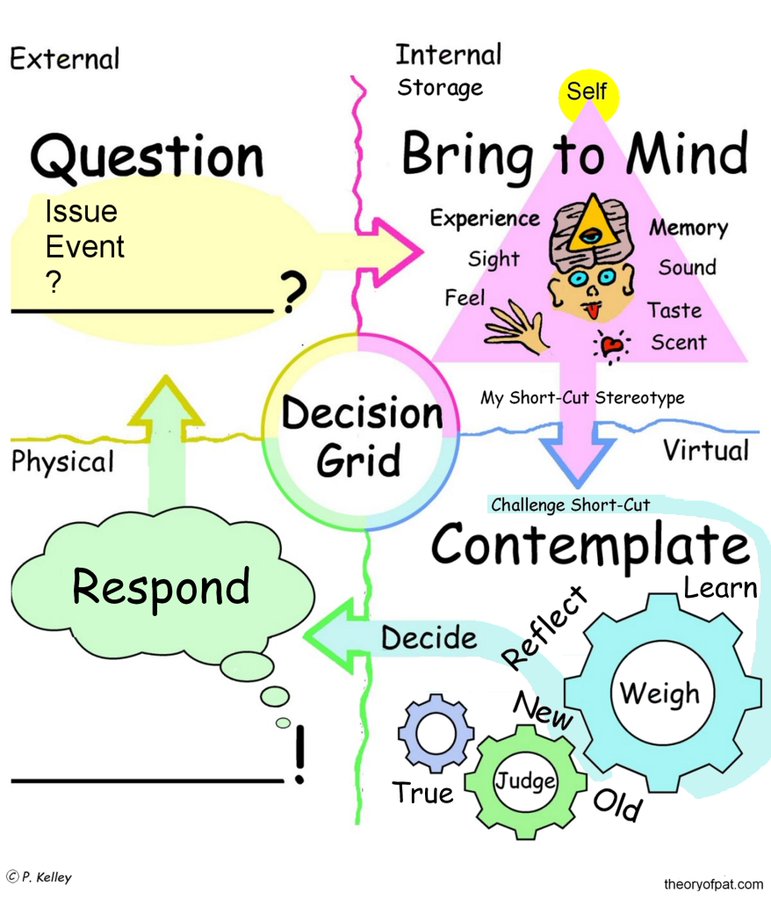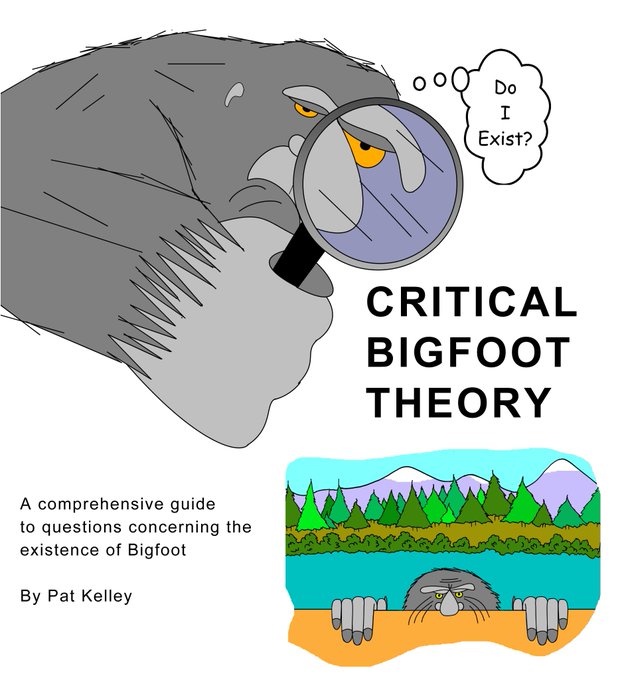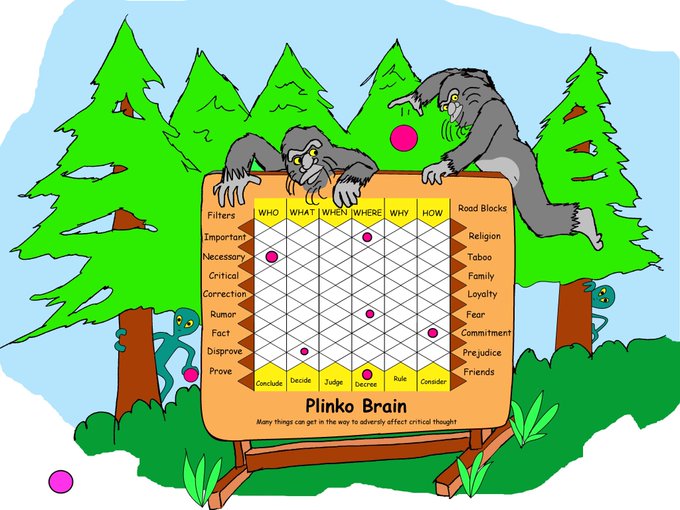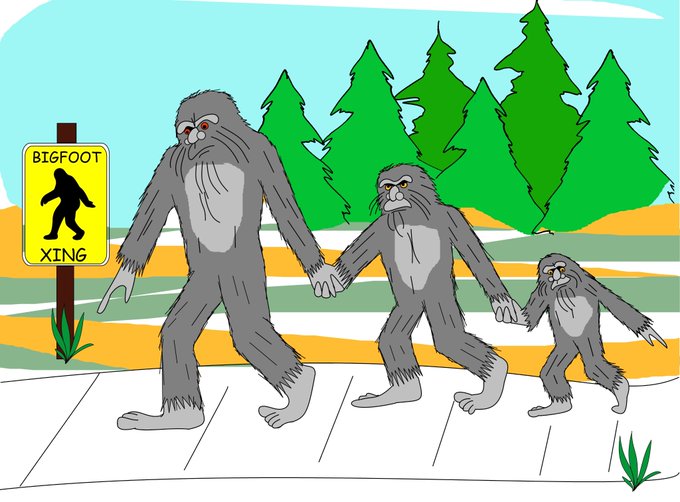Read Time:8 Minute, 9 Second
Currently, I live in Bigfoot country, going on 4 years as of this writing. In all this time there’s been nary a peep, a peek or a whisper of Bigfoot traipsing through the underbrush.
Bigfoot and cubs examine chain saw art statues of bigfoot
I’ve watched and own every scary DVD and BlueRay Snowbeast, Sasquatch, Yeti, Bigfoot horror movie ever made so, my authority to comment on the subject of Bigfoot is without question.
I also thoroughly enjoy Ancient Alien Astronaut theory because it gives my imagination and creativity lobes good, interesting workouts.
I am not a scientist, but am science-minded, not superstitious. I am leary of
who promise miracle cures then offer placebo products. I’m also not fond of faith healers, palm readers and fortune tellers.
I do believe extraterestrial life, or aliens, probably do exist, due to the fact there are billions of galaxies in the universe. The odds are great that civilizations exist in many of these galaxies.
However, Bigfoot, Sasquatch, Stinkman, Yeti by any other name, generally a described as a large 6′ to 10′ tall noisy, destructive hairy beast with a foul odor and foul temperment that can wreak havock, kill, terrorize, kidnap women and children – leaves no trace evidence, no blood, bones, claw marks, fur, poop… and can appear out of nowhere, perhaps a spiritual dimension, seems a bit too much snake-oil for me to swallow.
Alien overlords let bigfoot cubs out to play
As illogical as it sounds, everywhere I look, there exists billboards, statues, paintings, products emblazoned with Bigfoot likenesses. Bigfoot is literally everywhere and nowhere, and always depicted as a mysterious and dangerous, super monster, a spirit from the great unknown wilderness.
Perhaps the mythical is a personification of toxic masculinity, perhaps an allegory or symbol of the
of the unknown. It appears that Bigfoot, Sasquatch, Yeti is the proverbial boogyman. The main message to this legend is be afraid, be very afraid.
Boogity, boogity boo!
Critical thinking is the finer art of asking questions. Critical thought is the reluctance to accept a thing at face value. Instead of accepting yea or nea, I prefer to know why before accepting something yea or nea.
It is much easier to defend opinions when based upon fact as opposed to emotionally driven decisions based upon emotions, faith and feelings
Therefore, all Bigfoot evidence considered, I conclude, in a sarcastic Captain Obvious sort of manner, that belief in Bigfoot just might be some
. (as exemplified by Steve Martin in the 1979 comedy “The Jerk) and probably originated by native lore as a means to scare young children from wandering off, alone, into the deep forest. LOL.
Because I enjoy illustrating educational, family-friendly coloring book images and activities for children (of any age,) and I enjoy Bigfoot mythology, ancient aliens and fantasy et al, I designe a family-friendly Bigfoot color book.).
was a fun project and seems to be well received here in Crescent City by locals and tourists alike.
Children are the major focal audience, and because virtually every depicion of Bigfoot is of a violent and vicious, lone wolf, anti-family male persona, out to terrorize tourists, the idea evolved to portray Bigfoot as a loving family oriented beast who cares for and protects his well-hidden community.
I envisioned my own fun experiences of camping and playing in the redwood forests as a child when my family was intact and happier, then applied these experiences to illustrations of a happy, intact Bigfoot family.
And why not?
Could it be that Bigfoot is simply the victim of unfair stereotyping?
Now, there’s a critical thought exercise.
Bigfoot plays King Kong to scare a boater
Then it occurred to me I could discuss critical thinking and skepticism to the subject to expand the scope of this Bigfoot obsession.
Therefore, it seemed only logical for the next step in my Bigfoot saga was to apply the original Decision Grid and Plinko Brain to Bigfoot mythology to create a critical thinking guide to Bigfoot mythology. My hope is to inspire young minds to think about paranormal claims in a logical pattern to teach the whys and hows of healthy skepticism.
Original Decision Grid
As a skeptic of paranormal and claims of creatures of Cryptozoology, I often wonder how people can choose to believe tall tales when little to no evidence exists to support claims. This is where Plinkobrain comes in handy.
Plinkobrain demonstrates a train of thought that travels through the maze of synaptic connections in the brain. Like a pinball game, thoughts, ideas and input bounces off a myraid of mental obstacles before landing in a final decision or conclusion.
Plinko Brain mental roadblocks to critical thought
Using the 5W1H Kipking method of Who, What, When, Where, Why and How, which was drilled into my psyche by my parents 70 years ago…
I brainstormed all the questions I could possibly muster and came up with over 150 questions.
The most important Bigfoot question is the obvious:
“How can a creature so large, noisy, smelly and destructive exist but no physical evidence never be found?”
Other good questions:
-
What is Bigfoot really?
-
Where does Bigfoot live?
-
Who are the Bigfoot experts?
-
When does Bigfoot appear?
-
Why is Bigfoot fo destructive?
-
How can Bigfoot exist?
During this exercise, it occurred to me that clarification of terms might be in order. Not everyone grows up in environments filled with visits to libraries, bookmobiles, has access to stacks of encyclopedias, magazines, reference materials or has parents who answer every question with an annoying “look it up.”
Clarification of Terms for Critical Research:
Objective: In order to reach logical conclusions we must strive to think objectively, not subjectively.
Define Objective: Existing; actual or real, not hypothetical or imagined.
-
Based on observable phenomena; empirical, based upon facts or reality
-
Not influenced by emotions or personal prejudices
Define Subjective is the opposite of objective.
-
Subjective conclusions are opinions based upon personal experiences or feelings.
The Question begs itself:
Does Bigfoot Exist?
Let’s refer to the Bigfoot Critical Theory Decision Grid to examine the evidence:
Oh, hey, where is the evidence?
-
How do we find evidence?
-
Where do we begin to look for the evidence.
-
What questions should we ask?
-
What if I ask dumb questions? (PS there are no dumb questions)
Apply each and every question to the grid and consider each, one by one.
-
External: Question – How do we find evidence?
-
Internal: Memory, experience
-
Virtual: Contemplation, research
-
Physical: Conclusion, decision
What are My Resources
Here’s where clarification of resources comes in useful or in order for people who might not have confidence or training in analytical skills or are simply unaware of resources available for independent research.
We could simply tune in to Ancient Alien Theory Bigfoot pseudo-documentaries on TV or peruse random Bigfoot web sites on the net (all 2 to 3 million of them).
A better alternative is to learn what types of Resources are available that can help research about Bigfoot, and where to find good, trustworthy information.
Types of Resources That Can Help You Research About Bigfoot (and anything else BTW)
-
Dictionary,
-
Thesaurus
-
Trade magazines or newspapers
-
Professional research papers
-
Amateurs, enthusiasts.
-
Eye witness reports
-
Historical documents
-
Word of mouth
-
Internet web sites
-
Books and magazines
-
Libraries
Enter Critical Bigfoot Theory
Critical Bigfoot Theory includes helpful definitions and summaries of types of resources available to research Bigfoot.
The purpose of this book is to educate about critical thinking in a light hearted, study of Bigfoot with questions designed to inspire further inquiry.
Critical Bigfoot Theory
The result is the publication “
” now available through Amazon in paperback and on kindle.
Once a resource is located, using any category from the above list, the next step is to determine whether the source is credible or believable.
This is not always easy or obvious.
How can we tell what is credible, believable?
Telltail signs of leg pulling – beware:
-
Blurry and altered or photo-shopped images.
-
Manipulative words
-
Propaganda, Buzz Words
-
One-sided anecdotal information
-
Appeals to our senses sight, hearing, touch, smell, taste, etc.
-
Social media influences
-
Lack of source attribution
Beware 2-D thinking
Mass media generally encourages either/or, 2 dimensional thinking and actions. It makes for quick sales and rewards instant gratification.
Fight or flight is great for marketers, politicians, hucksters and emergency, life-saving situations, but such fast-thinking discourages the sort of deep thinking that results in personal growth in favor of instant gratification.
But what does it do for you?
Embrace Three Dimensional Thinking
3-D Thinking
Make room for growth, self improvement. Use introspection to discover how you think.
This is where the Bigfoot Plinko Brain visual comes in handy to remind the reader to check their own internal roadblocks before blindly accepting the validity of a resource.
What’s clogging your internal filters?
Why Should Critical Thinking Matter?
Fact: 90%, The vast majority of Internet content is never fact-checked for accuracy. Most utilize some form of leg pulling, as described above.
Impulse driven individuals become afraid to trust their own decisions. Fearful people can be more easily manipulated by misinformation and dishonest players who specialize in sowing doubt, fear and intimidation.
Rules, regulations and follow the dotted line instructions can become virtual sky hooks that stifle creativity and imagination.
When you become aware of your own biases, stereotypes, prejudices, taboos and emotions you make better decisions without having to depend upon the crutch of expert advice or written instruction.
If we don’t practice introspection of our own thinking and reasoning capabilitiies we make ourselves suseptible to manipulation by bad actors and just might find ourselves blindly following the wrong leaders.











